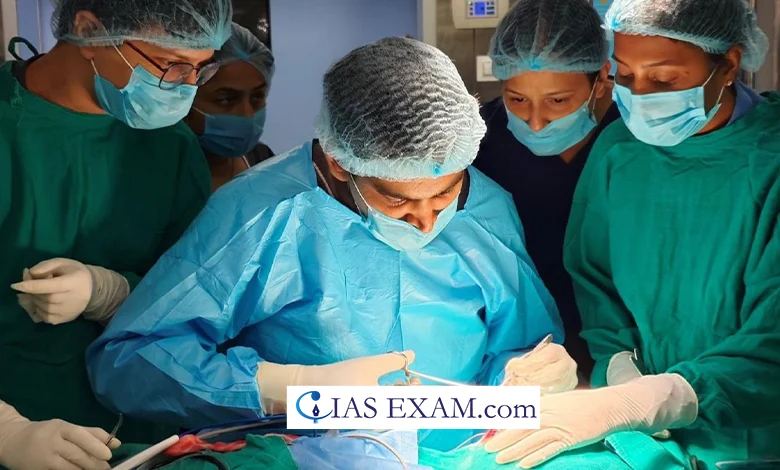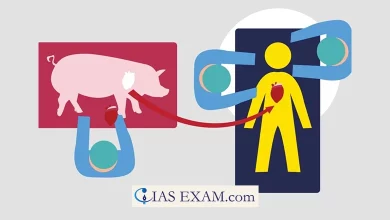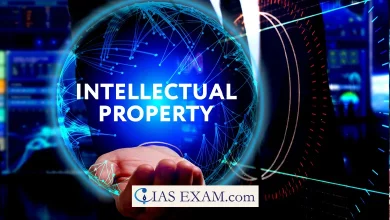
Context
The Command Hospital Pune has recently performed two successful piezoelectric bone conduction hearing implants, making it the first government hospital in the country to do the medical operations.
About
- Piezoelectric Effect is the ability of certain materials to generate an electric charge in response to applied mechanical stress.
- History: Piezoelectricity was determined in 1880 by Pierre and Paul-Jacques Curie, who observed that when they compressed positive types of crystals which include quartz, tourmaline, and Rochelle salt, alongside certain axes, a voltage turned into produced at the surface of the crystal.
Piezoelectric Principle
- Principle: This property is the result of their unusual crystal structures. Usually, the charges on atoms in the molecules that lead them up are symmetric on the sides of an axis.
- When some stress is implemented, the molecule is distorted and the asymmetry of charges offers upward push to a small electric current.
- Some materials additionally show an inverse piezoelectric impact, in which the utility of an electric current induces a mechanical deformation.
Key features of the piezoelectric effect
- Direct Piezoelectric Effect: When mechanical stress or pressure is applied to a piezoelectric material, it undergoes a mild deformation, causing the positive and negative charges within the material’s atomic structure to become displaced. This charge separation results in the technology of an electric current throughout the cloth.
- Converse Piezoelectric Effect: Conversely, while an electric field is carried out to a piezoelectric cloth, the positive and negative charges in the material shift, leading to a mechanical deformation or strain. In this situation, the electric subject induces mechanical movement in the material.
- Crystal Symmetry: The piezoelectric impact is most pronounced in crystals that possess a non-centrosymmetric crystal structure. Non-centrosymmetric approach that the crystal structure lacks an inversion center, wherein the positive and negative charges are perfectly balanced.
- The piezoelectric impact may be harnessed to transform mechanical vibrations or movement into electric power. This concept is used in self-powered sensors and energy-harvesting devices.
Applications
- Both direct and inverse piezoelectric materials are used in prescertain sensors, accelerometers, and acoustic devices – where their capability to transform mechanical signals into electrical signals is crucial.
- The material is also used in devices which includes microphones, phonograph pickups, and wave filters in telephone-communications structures.
Source: The Economic Times
UPSC Mains Practice Question
Q.What is piezoelectricity ? Discuss its day-to-day applications.





.png)



